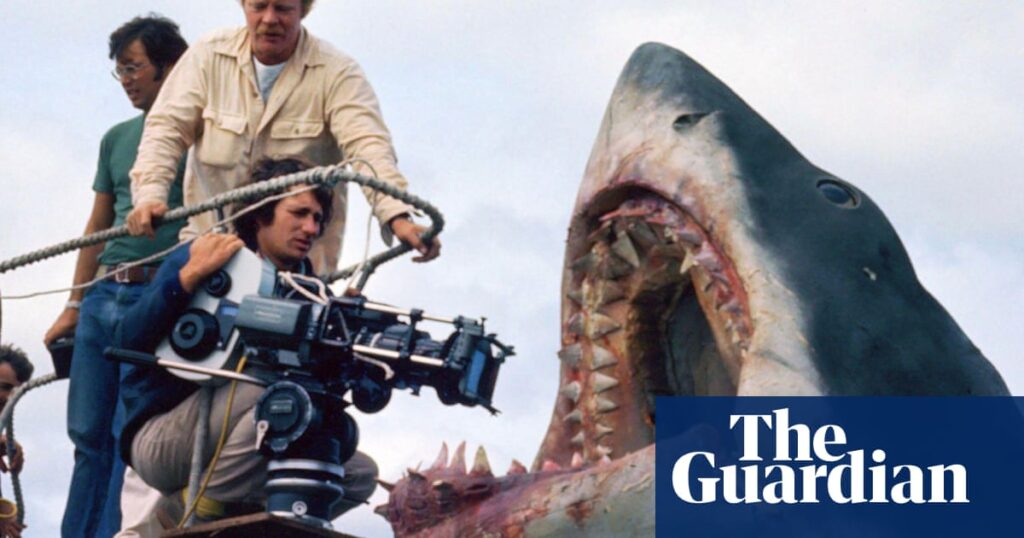
Half a century since its release, Jaws continues to leave an indelible mark on both Hollywood and the public’s perception of sharks. Released on June 20, 1975, the film not only redefined the summer blockbuster but also reshaped the way audiences viewed these ocean predators. Richard Dreyfuss, who starred as marine biologist Matt Hooper, admits he still avoids the ocean, saying, “You’re totally aware of what you’re not aware of and you’re not aware of anything underneath.”
The film, directed by Steven Spielberg and based on Peter Benchley’s novel, tells the gripping tale of a great white shark terrorizing a beach town. It was a cinematic milestone that paved the way for iconic franchises like Star Wars and the Marvel Cinematic Universe, while simultaneously casting sharks as fearsome villains.
The Making of a Masterpiece
Jaws was a production fraught with challenges. Spielberg, then in his mid-20s, insisted on filming in the open ocean off Martha’s Vineyard, leading to a budget that ballooned from $4 million to $9 million. The shoot extended 100 days over schedule, plagued by the mechanical shark’s frequent malfunctions. Dreyfuss recalls the chaos, “There were three different sharks and three different crews that worked the shark and it was all a disaster.”
Despite these hurdles, Spielberg’s decision to imply rather than show the shark directly, influenced by Alfred Hitchcock’s suspense-building techniques, turned a potential setback into a creative triumph. The film’s iconic two-note theme by John Williams further amplified the suspense, with Spielberg initially mistaking it for a joke until its effectiveness became undeniable.
“John is an extraordinary composer… You don’t see the shark first: you hear it. It put the fear of God in the audience and me and everybody.” – Richard Dreyfuss
Behind the Scenes: Tensions and Triumphs
The dynamic between the three leads—Dreyfuss, Roy Scheider, and Robert Shaw—was central to the film’s appeal. However, rumors of a feud between Dreyfuss and Shaw have persisted. Dreyfuss refutes these claims, stating, “It was not the truth. It was not the fact of our relationship at all.” He fondly recalls plans for future collaborations with Shaw, cut short by Shaw’s untimely death.
One of the film’s most memorable scenes involves Shaw’s character, Quint, recounting a harrowing wartime shark attack. Spielberg described it as “the scene that I’m proudest of in Jaws,” capturing the tension and fear that defined the movie.
Jaws’ Cultural and Environmental Impact
Jaws was a cultural phenomenon, drawing long queues at cinemas and becoming the first film to earn over $100 million in theatrical rentals. Its impact on sharks, however, was double-edged. While it sparked widespread fear, leading to a decline in shark populations, it also ignited interest in marine conservation.
“I truly and to this day regret the decimation of the shark population because of the book and the film.” – Steven Spielberg
Peter Benchley, the novel’s author, became a fervent advocate for marine life, co-writing TV documentaries and working with the Environmental Defense Fund. His wife, Wendy Benchley, continues this legacy, producing documentaries like Jaws@50: The Definitive Inside Story and supporting ocean conservation initiatives.
The Legacy of Jaws
Jaws not only transformed the film industry but also inspired a generation of marine scientists. Wendy Benchley notes, “Applications to study marine science have risen at universities around the country. That is an outcome of Jaws that people now understand.”
Despite its unintended consequences, Jaws remains a testament to the power of storytelling and its ability to influence both culture and individual lives. As Dreyfuss reflects on the film’s enduring legacy, he acknowledges the profound impact it has had on his own life and career, as well as its place in cinematic history.




